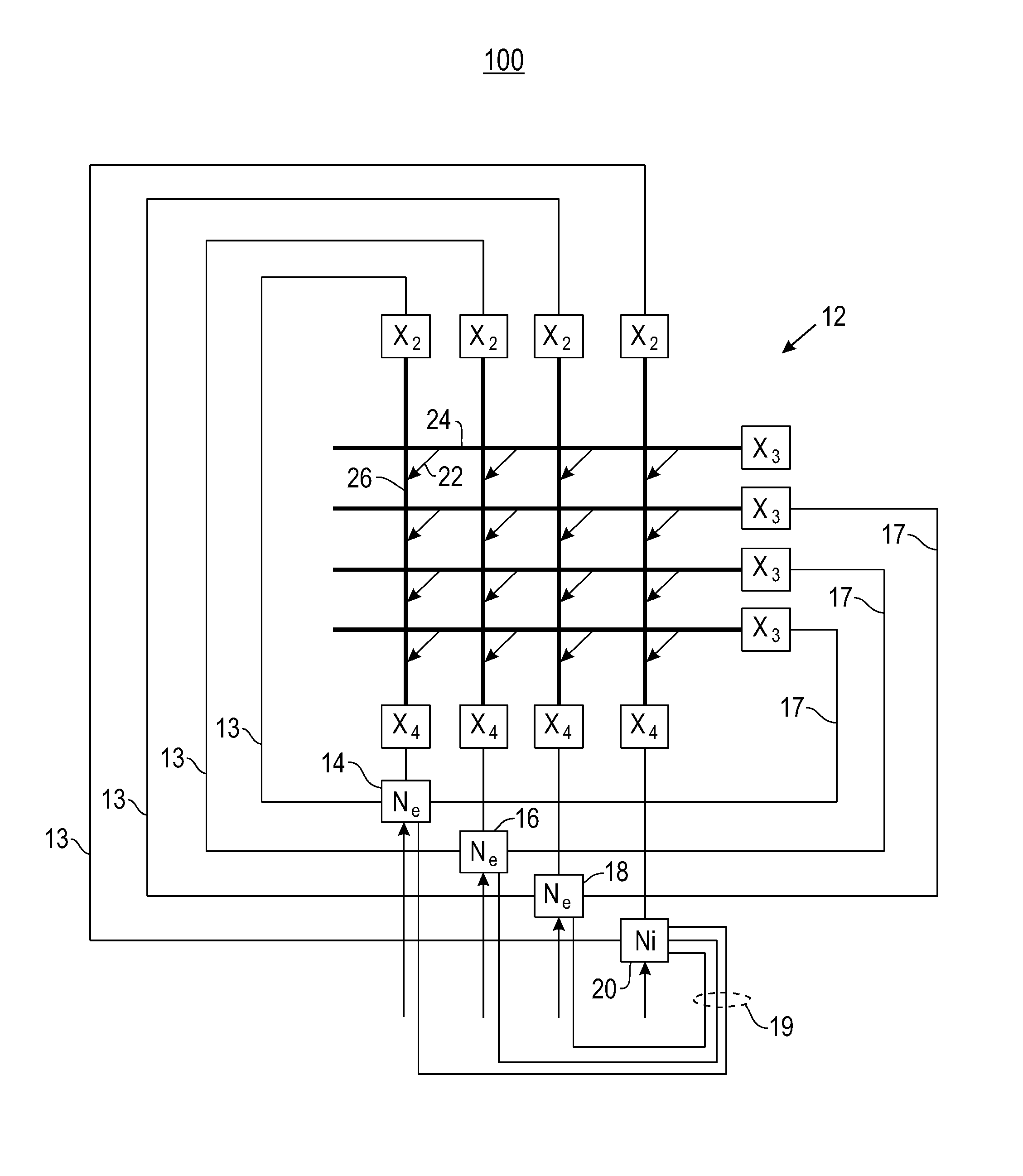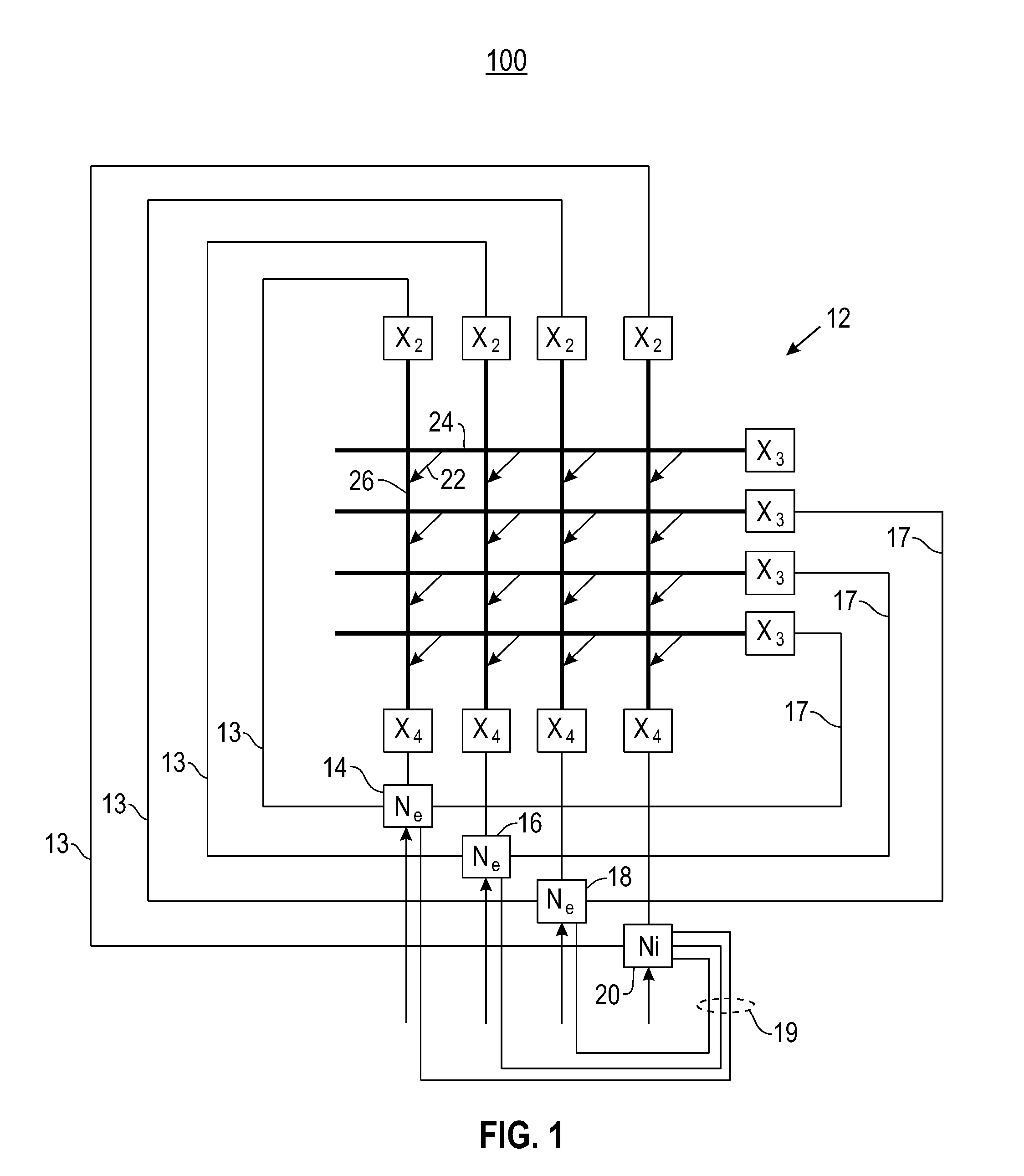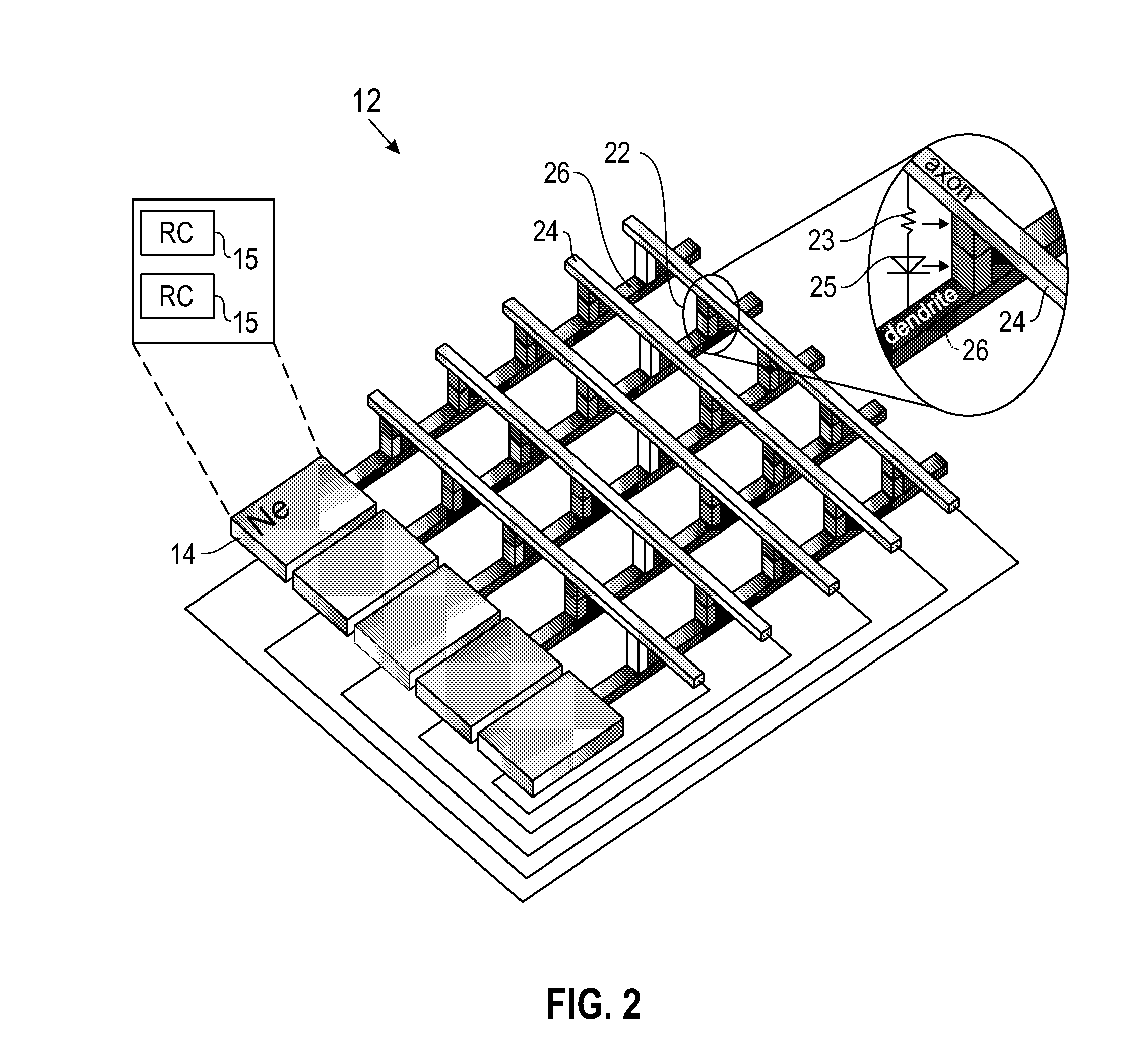Phase change memory synaptronic circuit for spiking computation, association and recall
- Summary
- Abstract
- Description
- Claims
- Application Information
AI Technical Summary
Benefits of technology
Problems solved by technology
Method used
Image
Examples
Embodiment Construction
[0020]Embodiments of the invention provide neuromorphic systems, including Phase Change Memory (PCM) synaptronic circuits for spiking computation, association and recall. In one embodiment, the present invention provides a synaptronic circuit architecture and operating method.
[0021]In one embodiment, the synaptronic circuit comprises a synapse cross-bar array which implements spike-timing dependent plasticity (STDP) using PCM synapse devices. Embodiments include analog variable state resistor which implement amplitude modulated STDP versions and binary variable state resistor which implement probability modulated STDP versions. Disclosed embodiments include systems with access devices and systems without access devices. Referring now to FIG. 1, there is shown a diagram of a neuromorphic system 100 comprising a cross-bar array 12 having a plurality of neurons 14, 16, 18 and 20 as a network. These neurons are also referred to herein as “electronic neurons.” In one example, the cross-b...
PUM
 Login to View More
Login to View More Abstract
Description
Claims
Application Information
 Login to View More
Login to View More - R&D Engineer
- R&D Manager
- IP Professional
- Industry Leading Data Capabilities
- Powerful AI technology
- Patent DNA Extraction
Browse by: Latest US Patents, China's latest patents, Technical Efficacy Thesaurus, Application Domain, Technology Topic, Popular Technical Reports.
© 2024 PatSnap. All rights reserved.Legal|Privacy policy|Modern Slavery Act Transparency Statement|Sitemap|About US| Contact US: help@patsnap.com










